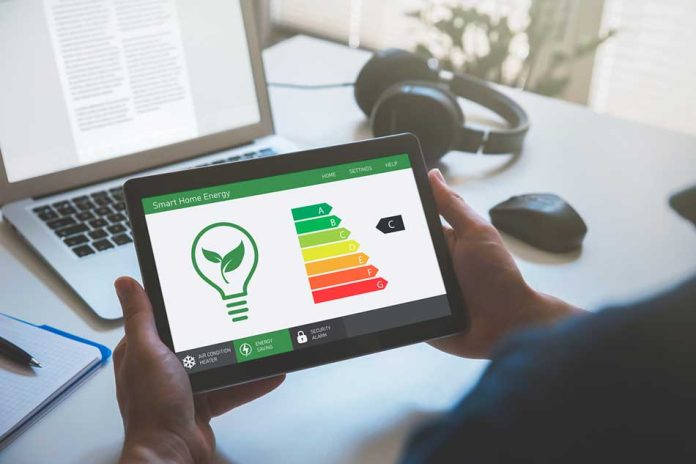Our current global agricultural strategy is in desperate need of innovation and overhauling. As the world’s population grows steadily, the amount of food needed to sustain our numbers exponentially increases alongside it.
Technology is the obvious solution to the levels of intensive farming needed to sustain a global population of 8 billion people and counting. One of the biggest trends the industry is seeing so far is an investment in alternative protein sources. In 2021, investments into plant-based meat, dairy and egg alternatives, cultivated meat and related tech reached $5 billion, a 61% increase over the 2020 total of $3.1 billion.
Other tech developments are in the works as well, and they are trends that are likely here to stay. This means businesses should keep an eye out for the following innovations and continued development of these trends in 2023.
1. Data-driven agricultural solutions
Since 2014, the U.S. alone has lost almost 14 million acres of farmland. In addition, an estimated 80% of global fisheries are in critical danger, and 90% of the global stocks of large predator fish are completely gone. In response to this crisis, many farms and fisheries are already implementing satellite technology and seeking new ways to increase the productivity of existing resources. For example, the data collected from satellites can be used to create better, more efficient controls over planting, watering and harvesting, saving time, energy and resources.
Other data-driven farming solutions include tracking sustainability, monitoring profits and produce grading in processes called “intensive farming.” These solutions rely on gathering accurate data to make strategic and operational decisions regarding things like disease control and adjusting for the current state of the climate as well as gathering health statistics for livestock.
There will likely be more investment in these solutions in the near future, and companies that understand how to deliver these solutions will see a huge spike in demand.
2. Smart farming practices
Companies no longer have the ability to simply scale up their farming infrastructure because there is not enough space to do so. Instead, they have begun to rely on smart tech solutions to increase effectiveness on a large scale. This includes IoT technology to monitor crops and livestock, predictive analytics and greenhouse automation.
Smart farming solutions can, for example, collect temperature data from tens of thousands of points within a production facility, which allows the HVAC system to adjust automatically to support optimal growing conditions for crops or livestock. IoT sensors can also be deployed to more closely track and trace cattle or sheep or establish geofencing perimeters, improving yields and reducing the burden of human workers.
3. Controlled-environment agriculture: hydroponics, aeroponics and vertical farming.
Controlled environment agriculture (CEA) is one of the most critical trends that will be around for years to come. Important crops can often only be grown in certain regions or under specific conditions, so if there is a catastrophe (such as political unrest, natural disaster or supply chain rupture), then the rest of the world cannot get access to the supplies they need. This is also crucial for establishing food security in countries with no natural resources for food production, like Singapore or the UAE.
Shifting to an agriculture model that utilizes hydroponics, aeroponics and vertical farming means a substantial boost in production and the ability to grow crops in nearly any region of the world. Companies that can take advantage of these production methods are already seeing huge growth, which will continue into the future.
One major hurdle to widespread adoption of CEA is the high energy costs. Some estimates say as much as 60% of an indoor cultivation facility’s costs are attributable to HVAC, lighting and dehumidification. There is a need for more innovative solutions to this problem before CEA can become the norm.
CEA methods also allow for more efficient use of resources and, in many cases, much higher yields as well. For example, vertical farms allow for shorter growth cycles and faster harvests, so farmers can actually increase their yield while decreasing the amount of space needed. They can also utilize multiple types of growing systems (e.g., hydroponics, aquaponics) as well as new robotics and data collection solutions to improve productivity and reduce expenses even further. This helps bring the cost of vertical farm crops closer to market prices and makes it possible to feed more people with fewer resources.
This is also important for solving logistical problems in the same way that hydroponics and aeroponics are. By introducing more methods for controlled growing environments, there is an immediate reduction in dependency on one region for important crops or livestock.
4. Creating sustainability via better economics and shorter supply chains
Humanity needs sustainable alternatives for everything, from energy to protein to consumer goods.
There are many sustainability trends in agriculture, such as optimizing water usage through green water agriculture. “Green water” refers to the rainfall over land and its subsequent flow back into the atmosphere, making it a circulating resource. The focus on green water is relatively new, but it will be an ongoing trend since water scarcity affects the agricultural industry more than any other.
Shortening supply chains helps boost local economies and bolster regional food security while improving profits for local suppliers and increasing the strength of the market as a whole. More localized production and distribution of food improves food security and drastically lowers carbon emissions. More support in this aspect of sustainability could come from companies investing in better local infrastructure, providing resources to navigate procurement and documentation (such as access to blockchain technology) and creating accessible digital platforms for more competitive distribution capabilities.
Innovation is the Solution to Food Insecurity
We are in the midst of a global food crisis. According to World Food Programme, as many as 828 million people go hungry every day, and 50 million people in 45 countries are on the verge of famine.
Governments and businesses are seeking innovations and new technologies to tackle the current state of economic turmoil and the climate crisis, and these efforts are likely to surge over the next year. It’s important to remember that not only do these solutions need to be sustainable, but they also must be cost-effective and implemented on a large scale in order to be effective.
These trends are here to stay, so businesses should take note of each and seek out ways to integrate them into a better long-term agricultural solution.
About the Author
 Arseniy Olkhovskiy Founder and CEO at FlyFeed
Arseniy Olkhovskiy Founder and CEO at FlyFeed



































